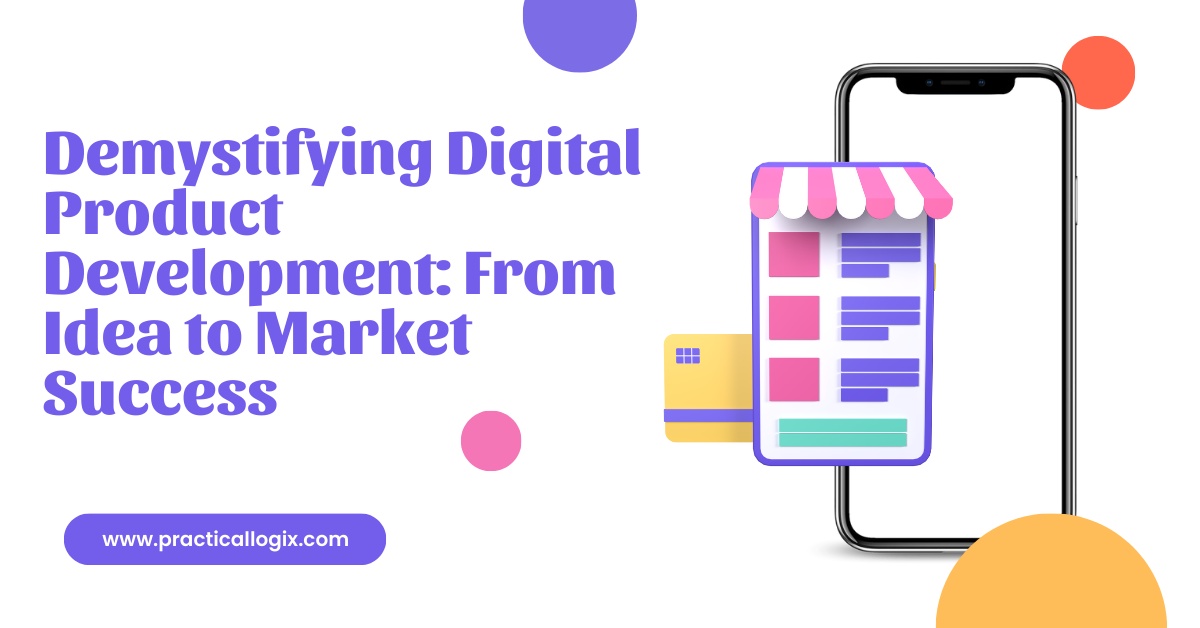In the fast-paced digital landscape of today, the concept of digital product development has gained increasing importance for businesses aiming to innovate, adapt, and thrive in the digital era. However, it is crucial to understand what exactly digital product development entails and how to navigate the journey from idea to market success. This blog post aims to demystify the process of digital product development and provide valuable insights into its key components.
Understanding Digital Product Development
What is digital product development: Digital product development refers to the creation and delivery of software-based products and services to the market. These products can encompass a wide range, including mobile apps, web applications, software platforms, and digital tools and services that address specific problems or cater to the needs of a target audience. The ultimate objective is to deliver a valuable, user-friendly, and market-ready digital solution.
The Key Components of Digital Product Development
Idea Generation and Validation
Every successful digital product begins with a brilliant concept. This can arise from recognizing a market gap, addressing a specific problem, or capitalizing on an emerging trend. It is vital to validate your idea through thorough market research, competitor analysis, and feedback from potential users. This step ensures that there is a demand for your product.
Market Research and User Persona Development
Understanding your target audience is crucial for digital product development. Conduct comprehensive market research to identify your potential users' pain points, preferences, and behaviors. Create user personas to gain a deep understanding of your ideal customers, enabling you to tailor your product to their specific needs.
Prototyping and Design
Once you have a clear vision of your product, develop prototypes and designs to visualize its user interface (UI) and user experience (UX). Prototyping allows for iteration and refinement of ideas before investing in full-scale development. A well-designed product is more likely to resonate with users.
Development and Testing
The development phase involves coding and building the actual digital product. This is where your idea takes shape, and your designs become functional. Thorough testing is vital to identify and resolve bugs, ensuring that the product functions as intended. Development methodologies such as Agile and DevOps are often employed to efficiently manage this phase.
Deployment and Launch
Launching your digital product into the market is a significant milestone. It involves deploying the product to the chosen platform or distribution channel. Ensure you have a well-defined marketing and promotional strategy in place to create awareness and generate initial user interest.
User Feedback and Iteration
Once your product is in the hands of users, actively gather feedback and closely monitor its performance. This feedback loop is crucial for making improvements and incorporating new features. Continuous iteration based on user insights can lead to product refinement and enhanced user satisfaction.
Scaling and Growth
As your product gains traction, it is crucial to plan for scalability. Ensure that your infrastructure, servers, and databases can handle increased traffic and user demands. Focus on growth strategies, such as user acquisition and retention, to expand your user base effectively.
Maintenance and Support
Digital products require ongoing maintenance to address technical issues, security updates, and evolving user needs. Providing reliable customer support is vital for building trust and retaining users in the long run.
Data Analytics and Insights
Leverage data analytics tools to gather valuable insights into user behavior, engagement, and performance metrics. Data-driven decision-making can guide future development efforts and help you stay ahead of market trends.
Monetization and Business Model
Determine how your digital product will generate revenue, whether through subscriptions, advertising, in-app purchases, or other appropriate monetization strategies. Ensure that your business model aligns with your product's value proposition and target audience.
Conclusion
Digital product development is a dynamic and iterative process that encompasses ideation, research, design, development, launch, and ongoing refinement. It is a journey that demands adaptability, creativity, and a profound understanding of your target audience's requirements.
By adhering to the key components outlined in this blog post, you can demystify the process and enhance the likelihood of creating a successful digital product that fulfills user expectations and attains market success. Remember that in the ever-evolving digital landscape, remaining responsive to user feedback and market trends is imperative for long-term viability and growth. Embrace the digital product development process, and your innovative ideas have the potential to become the next digital success story.


No comments yet